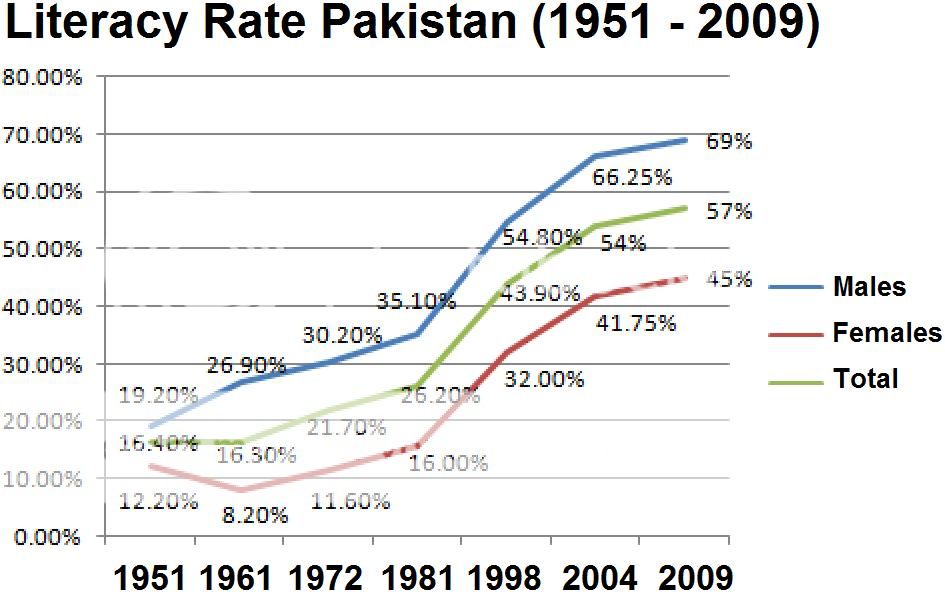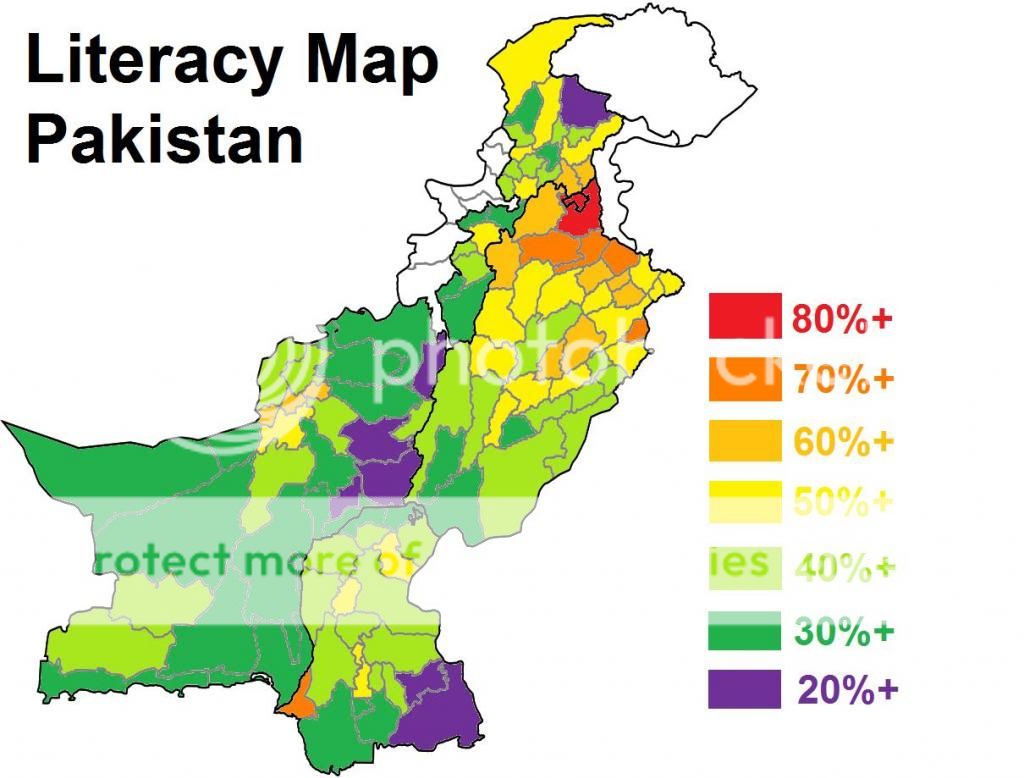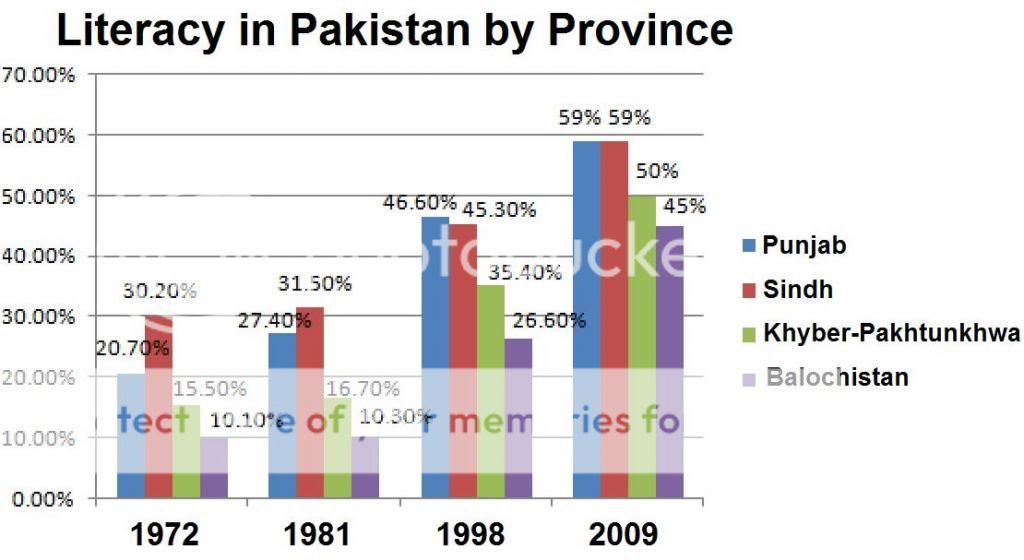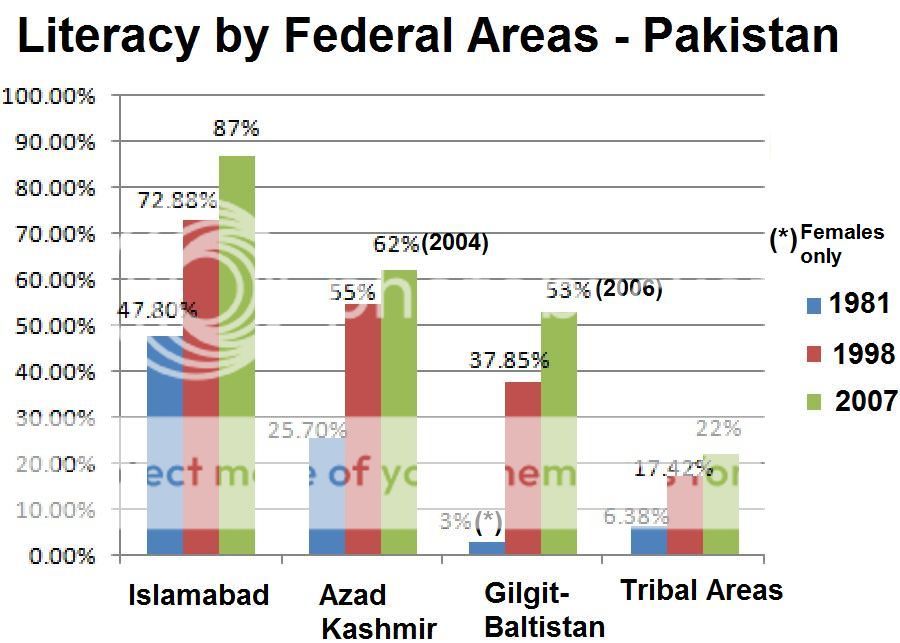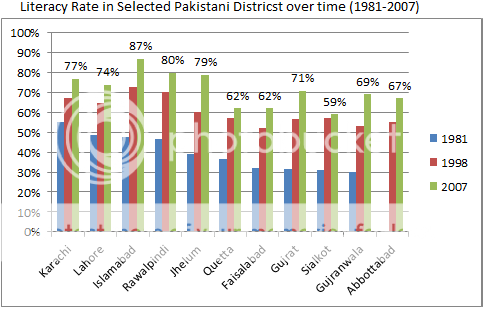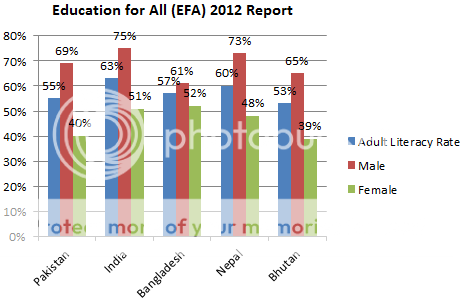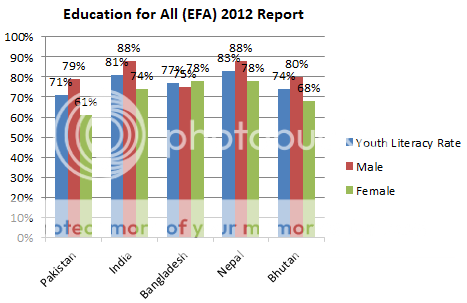Fact Sheet
Education in Pakistan
Pakistan has some of the worst education indicators globally
Pakistan has the world’s second highest number of children out of school, reaching 5.1
million in 2010. This is equivalent to 1 in 12 of the world’s out-of-school children.
• Two-thirds of Pakistan’s out of school children are girls, amounting to over 3 million
girls out of school.
• From 1999 to 2010, the primary net enrolment ratio rose from 58% to 74%. But the ratio
for girls is still 14 percentage points behind the ratio for boys, leaving only eight girls to
every ten boys in primary school.
• 49.5 million adults are illiterate, two-thirds are women. This is the third largest globally.
• Projections indicate that the number of illiterate adults will increase to 51 million by 2015.
• The country ranks 113 out of 120 countries in the Education Development Index.
Pakistan’s spending on education is very low, and has decreased
Pakistan has reduced spending on education from 2.6% of gross national product (GNP) in
1999 to 2.3% of GNP in 2010.
• In 2010, the country allocated only 10% of government spending on education.
• Pakistan spends around 7 times more on the military than on primary education.
Pakistan has amongst the widest education inequalities in the world
In 2007, one quarter of 7-16-year-olds had never been to school, with wide variations by
region, wealth status and gender.
• While only 17% had never been to school in Punjab, 25% were in the same situation in
Khyber Pakhtunkhwa and 37% in Balochistan.
• Poorest girls are most disadvantaged in all three provinces, with over half never having
been to school.
• In Swat District, only around 1 in 3 of girls are in school.
The long term effect of neglecting children’s education is
There is a huge skills deficit among young Pakistanis now facing the world of work
• Over one in three young people in Pakistan have not completed primary school
and, as a result, do not have the basic skills they need for work.
• Equivalent to a total of 12 million15 to 24 year olds lack basic skills, which is the
second highest number in developing countries.
Young people from disadvantaged backgrounds are least likely to have skills for decent jobs:
• While over 70% of the richest young men and womenhave completed lower
secondary school, only 16% of the poorest young men and fewer than 5% of the
poorest young womenhave done so
• Nearly half of rural young womenin the country have not had the chance to go
to school, compared with only 14% of urban young women.
Not getting skills affects young people for life:
• While8% of menare not in the labour force, the figure for women is 69%.
• Men earn 60% more than women, on average. The wage gap is widest for those with
low levels of literacy and numeracy.
• Yet education can make a big difference to women’s earnings. Women with a high level
of literacy earn95% more than women with no literacy skills, whereas the
differential was only 33% among men.

